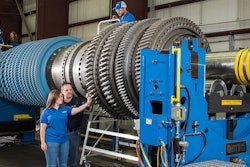It is no surprise that theft and the presence of unauthorized people at the facility is a major concern at manufacturing plants and DCs. This is especially true within certain industries.
According to one industry source, top targets for theft are food and drink along with electronics and household goods. Pharmaceuticals also rank high on the wish list. It is understandable that these products are tempting given the large black markets for them, but almost anything housed in a manufacturing or shipping facility can disappear. Even raw material is being stolen thanks to an international demand for metals.
Criminals use the Internet to track high-volume shipments or easy-to-sell merchandise. Consequently, the FBI reports the total loss from theft is between $15 and $30 billion annually. Many of these thefts go unreported out of fear of increased insurance rates and reputation-damaging publicity.
Cargo/inventory theft occurs along all points of the supply chain, starting with the point of origin at the plant/DC. There are a number of approaches for plant/DC security, including guard shacks, surveillance cameras, RFID ID badges, training and communications. Cisco-Eagle says that a plant has “too many doors” and that they should be guarded at all times.
Although keeping a pair of eyes on every doorway is a good idea, in reality total vigilance is easily achieved. One effective solution is to make the opening as discouraging as possible by using high-speed doors.
For the most part, access to these facilities is either through a pedestrian door or a loading dock door. Quite often pedestrian doors have an access control system. But this isn’t so for dock doorways, even though there can be dozens of them on a facility. Dock doors are either down and closed or there is a truck trailer parked in them. Nevertheless, unless the doorway has a robust dock seal, products can be successfully stolen by squeezing them between the trailer and the dock wall.
There are many facilities that have very large doorways for yard access or to accommodate machinery or other very large assemblies entering or leaving the building. These doors often measure 16-feet x 20-feet or larger.
The problem with larger doorways is that the doors on them typically operate very slowly, at least in part because they are thick or insulated to reduce energy loss. In extreme-weather states in particular, the door panels are specified to emulate the insulation in the building wall to minimize heat transfer.
While protecting against energy loss, these doors may not actually safeguard the doorway. Building invasion can come in the form of what security experts call “piggybacking” — where an intruder times out authorized vehicle access along with door closing time to slip into the building. Given the size of these doorways, the time between a vehicle clearing the doorway and the door being closed can be ten to twenty seconds - ample time for someone to make their move.
High-speed doors virtually eliminate that window of opportunity. Operating at speeds of over 100 inches per second, these doors can be fully closed in just over two seconds. Meaning once a vehicle clears the threshold, the door is promptly closed, rendering the doorway inaccessible.
Further discouragement from unauthorized entry is the weight of the door. No one would want to risk injury from the speeding rolling curtain as it descends, though in fact there are safety measures built into the door. These include electric eyes and a sensitive safety bottom edge that quickly reverses upon contact. Most intruders though, will not know that.
Once a high-speed door is closed, the doorway stays totally guarded. The doors have inpenetrable aluminum slat construction, with an automatic locking mechanism to make sure the door is secured once closed. In addition, the slats are enclosed within tight side guides that ensure the doorway is totally sealed.
Though high-speed models tend to represent a higher investment than standard doors, additional benefits justify these faster doors going up on the doorway wall.
Sustainability — Though high-speed doors do not offer the resistance to heat loss of some standard doors, the speed greatly reduces the effects of air infiltration. According to a study by the Door and Access System Manufacturers Association, depending upon frequency of door usage, a high-speed door can save more energy than a highly insulated version. In addition, the door’s side guides reduce air infiltration.
Efficiency — Many doorways at a manufacturing facility, especially those that enable yard access, can be opened and closed dozens of times in a day. The seconds waiting for a slow door to open adds significant time to the daily schedule. However, depending upon the approach distance for the yard vehicle, even doors this size open fast enough to enable the driver to access the doorway without slowing down.
Employee Comfort — People working near the doorway during extreme weather can be very distracted by blasts of hot or cold air or debris blowing into the work area. Certainly repairing or manufacturing sensitive equipment in this adverse environment has to happen elsewhere. Both these conditions can be issues in facilities where space is tight. But this concern is almost nonexistent when the doors close in just a few seconds.
High-speed doors can also provide audio comfort. The slats are designed so they have no metal-to-metal contact and thus do not make high-pitched screeching noises, which can be painful to employees’ ears.
Maintenance — It is not uncommon for a door to clip the top of a vehicle accessing the doorway. When that happens, work stops, with the door damage the doorway is left exposed, the driver may get written up, and fixing the damage to a large door is costly.
This is a bad situation all around. Worse, if the damage is severe the doorway is left exposed to both the elements and unwanted trespassers.
A high-speed door not only protects the doorway, but protects itself by quickly clearing the way and rolling up into a tight bundle over the doorway. Accidents are avoided both by lumbering trucks and yard vehicles traveling at high speed.
Criminals and others, who want to access places where they don’t belong, for whatever reason, can find various ways to compromise the security of a plant/DC. Though large doorways are one obvious and visible entry point into the building, eliminating its vulnerability can add greatly to the building’s overall security.
Michael Watkins is vice-president of marketing at Rytec Doors.























